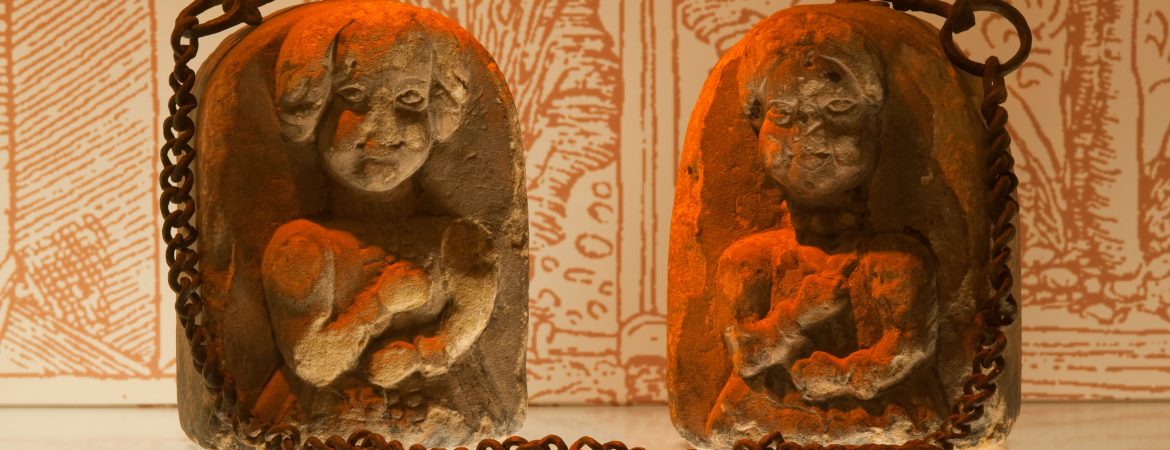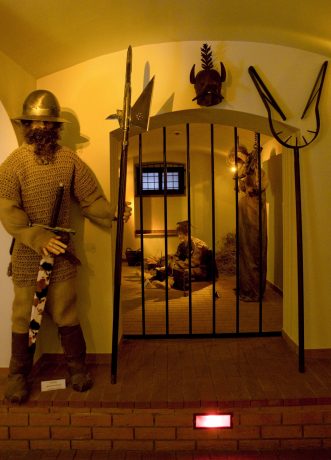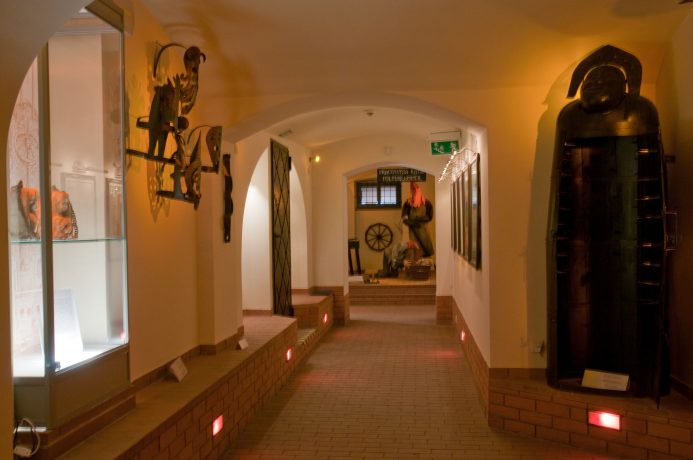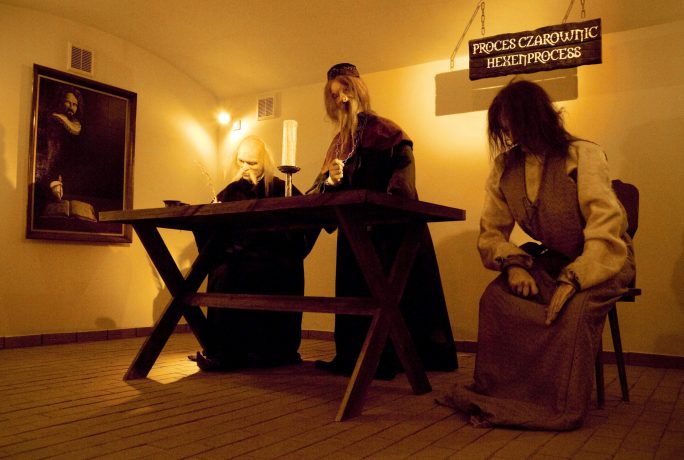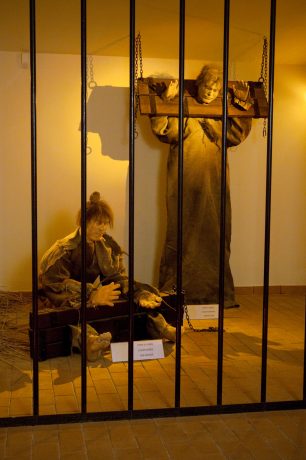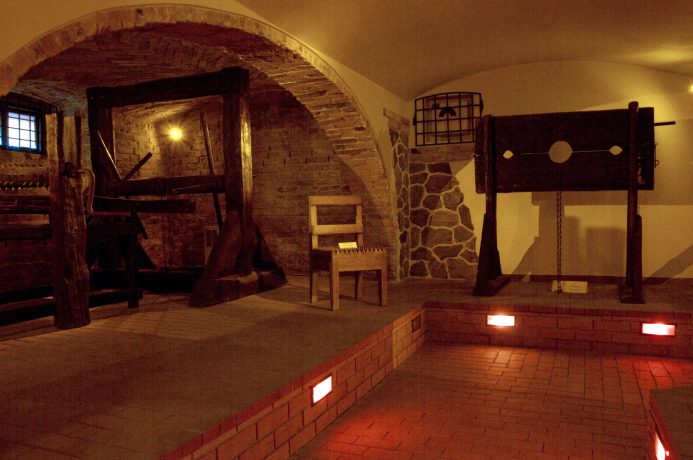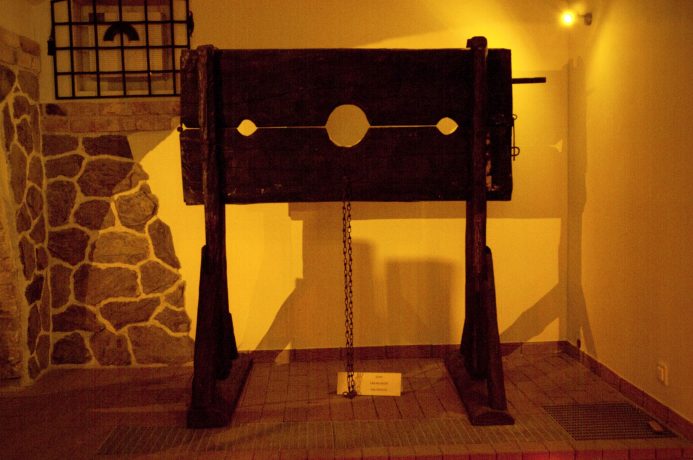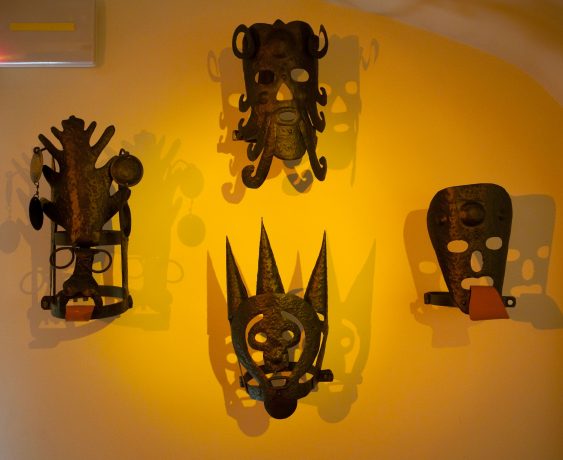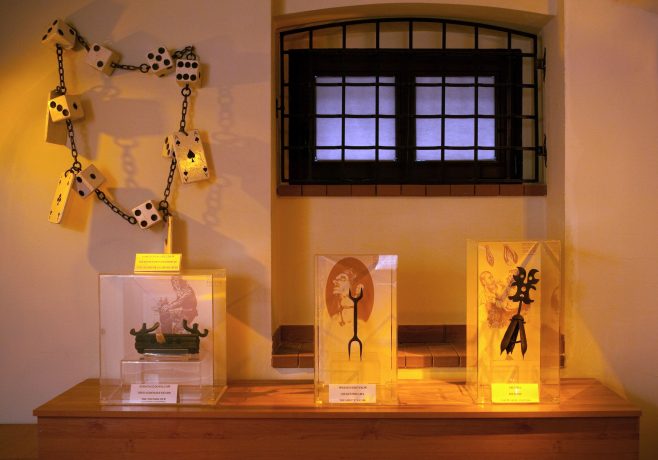We came across the Museum of Old-Time Tortures while exploring the Museum of Lubuska Land. The Museum, well both of them, are located in Zielona Góra, which is in western Poland. The city itself was actually founded by newcomers from Germany and Flanders back in medieval times. The origin of the Museum of Lubuska Land reaches back to the beginning of 20th century when one of the locals, Albert Severin, offered the city his private collection portraying the heritage of guilds. The main mission of the Museum is to present the history and specifics of the region and the Museum of Old-Times Torture is one of its permanent exhibitions.

The Museum is the biggest such gallery in Poland and focuses on the history of Crime Law and the development of punishment systems starting back in the Middle Ages. The tour takes you on the dark journey of human pain, fear and blood, thus making it definitely not the one for kids! Actually, kids under twelve years are suggested not to visit the Museum due to the drastic elements of the exposition. Though for the adults, the darkness, sometimes soaked in the mystic legends (like ones about the witch hunt), is very appealing and that is why we decided to explore the Museum of Old-Time Tortures.


The displays covers the surface of around two hundreds square meters. The gallery is divided into several segments and the main one is the partially reconstructed dungeon. There is also the chamber of tortures with a variety of presented execution tools, as well as the chamber where the witch trials were taking place. Though there are two extremely rare exhibits that are both considered to be the diamonds of the gallery. The first object is Extract Protocolli, which simply is the extract from the acts describing the witch trials conducted in the region of Zielona Góra. The precious manuscript reaches back to the 17th century and was the main inspiration to create the whole Museum. The Extract is the only direct source of knowledge of the witch-hunt that was happening and it includes the transcripts of the interrogations along with the description of the tortures and the trials.
The witch hunt came to Zielona Góra in 1640 and the series of blood spectacles opened with four women burned at the stake. The next victim was convicted fifteen years later and also died in the fire. The poor woman was accused of taking neighbors’ milk, bringing a storm to the village and also making one of the local women sick. All the accusations were confirmed by the court. The witch hunt turned into a vicious circle. During the sever torture, women were always „saying the truth” by admitting they are witches and giving away the names of other witches. In 1665, with the influence of the Emperor itself, the court in Zielona Góra was banned from continuing the trials.

The second real treasure of the Museum are the Stones of Shame, a medieval torture tool. Back in the Middle Ages, the range of instruments of tortures was extremely wide and rich. One of them were the Stones of Shame, used in the whole Central Europe from 13th century until 18th century. The Stones that are on the display in the Museum in Zielona Góra come from the collection of the pre-war Heimatmuseum (the prototype of Museum of Lubuska Land). The main aim of the stones was to present the culprit to the public and openly stigmatize her as the Stones were punishment only for women who were accused of puissance or gossip. They are the two heavy stones hanging from the chain with the women image engraved on them from the two sides. They both weigh about twelve kilograms. The guilty woman had to basically carry the stones on her back, usually during the market days, so everyone could see what she was accused of. Sometimes along with the punishment of stones the victims were also punished with the whipping.
Inside the Museum, visitors can also enter the Chamber of the Executioner that could actually be called his office. In Zielona Góra, as in any other respected city in Silesia, the position of Executioner was ranked as a city clerk since he was claiming his wages from the city treasury. Being an executioner was quite a profitable job and the price list of their services can be seen in the Museum. Not everyone knows that profession actually required special skills and precision as the audience demanded the perfect spectacles. Executioners considered themselves to be a tool of justice.
The realism of the exposition was very important for the gallery's creators, therefore they did everything they could to capture the horrible atmosphere of the chambers. There are audio effects containing groans and screams of the tortured ones; there are mannequins and crafted rats. The display also has a part concerning „the honor punishments,” which could be considered the first mental tortures. There are many examples of tortures instruments, from the iron virgin to something called Spanish shoes.


The Museum of Old-Time Tortures is a unique historical museum. It focuses on parts of history that are shameful for human race and which we all would rather forget. But forgetting usually brings everyone to the starting point again. That is why it’s important to get to know the dark moments and remember them. The imagination of, especially medieval, organs of justice were cruel, dark and looked like they had no limits in ways of giving pains and dehumanization victims. In that way, the Museum works as a grim reminder of what people should never go back to. It’s absolutely worth of visit, though it’s not going to be the most pleasant museum trip. It’s going to be the important one though.
